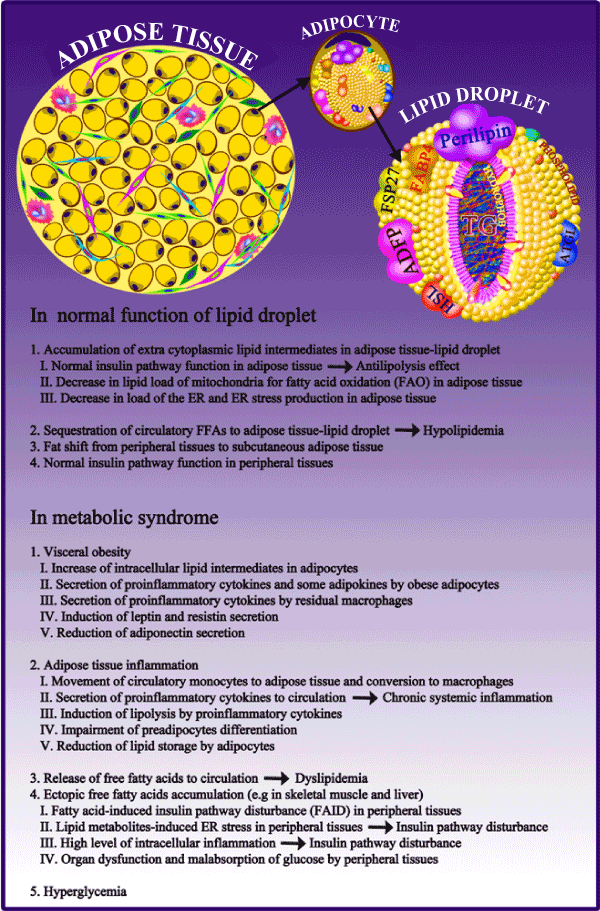
 |
| Figure 3: Comparison between local and systemic effects of the function of adipose tissue in normal state and in metabolic syndrome. Adipose tissue is composed of different cells. Among them adipocyte is specialized for storage of excess energy of body in the form of triglyceride. The main components of adipocyte are plasma membrane, one nucleus, mitochondria and one large specialized lipid droplet in the mature state that absorb fats from the adipocytecytoplasm and body. Structure of lipid droplet, similar to lipoproteins, is composed of one layer of phospholipids, which cover the hydrophobic lipid components of the particle (triglyceride). The lipid droplet-specific proteins (e.g. FSP27) assemble with the particle and have a major role in the function of fat organelle. In normal state, a functional adipose tissue absorbs FFAs from peripheral tissues to its LDs and decrease load of lipids in the circulation and peripheral tissues. While in metabolic syndrome, malfunction of adipose tissue, due to the enlargement of adipocyte, stimulates inflammation of adipocytes and lipolysis of intracellular triglycerides. Release of FFAs to the circulation and peripheral tissues leads to dyslipidemia and insulin pathway disturbance (FAID) in peripheral tissues. LDs: Lipid Droplets; TG: Triglyceride; FSP27: Fat Specific Protein 27; ADFP: Adipose Differentiation-Related Protein; HSL: Hormone-Sensitive Lipase; ATGL: Adipose Triglyceride Lipase; ER: Endoplasmic Reticulum, FAID: Fatty Acid-Induced Insulin Disturbance. |